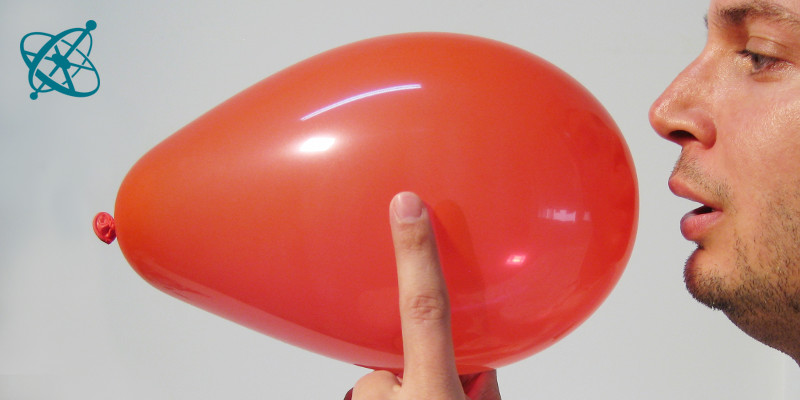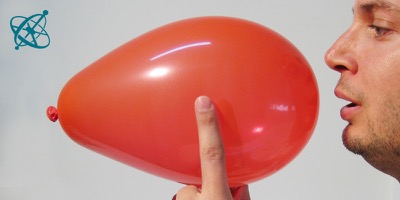 www.sciensation.org | Ciênsação hands-on experiments are published as Open Educational resources under a Creative Commons Attribution-ShareAlike 4.0 International License.
www.sciensation.org | Ciênsação hands-on experiments are published as Open Educational resources under a Creative Commons Attribution-ShareAlike 4.0 International License.
Can you feel your voice?
Feel your voice
Some experiments go to great length and cost to make sound waves visible. This extremely simple activity only requires a balloon and a few seconds, but is far more direct, personal and memorable.
Sound is our perception of compression waves in air.
Experiencing a haptic perception of sound waves.
Gently hold an inflated balloon between your fingertips and start talking or singing with your mouth close to the balloon.
1. How does your voice turn into this tactile feeling on your fingers?
What do you feel?
› A vibration of the balloon.
Can you feel the pitch of your voice?
› Yes, the frequency of the vibration changes with the pitch of the voice.
What makes the balloon vibrate?
› The sound of the voice moves the air in the balloon.
When the sound waves from the student's voice pass through the balloon, the pressure changes in the air make the thin rubber vibrate. These tiny vibrations can be felt on the fingertips.
